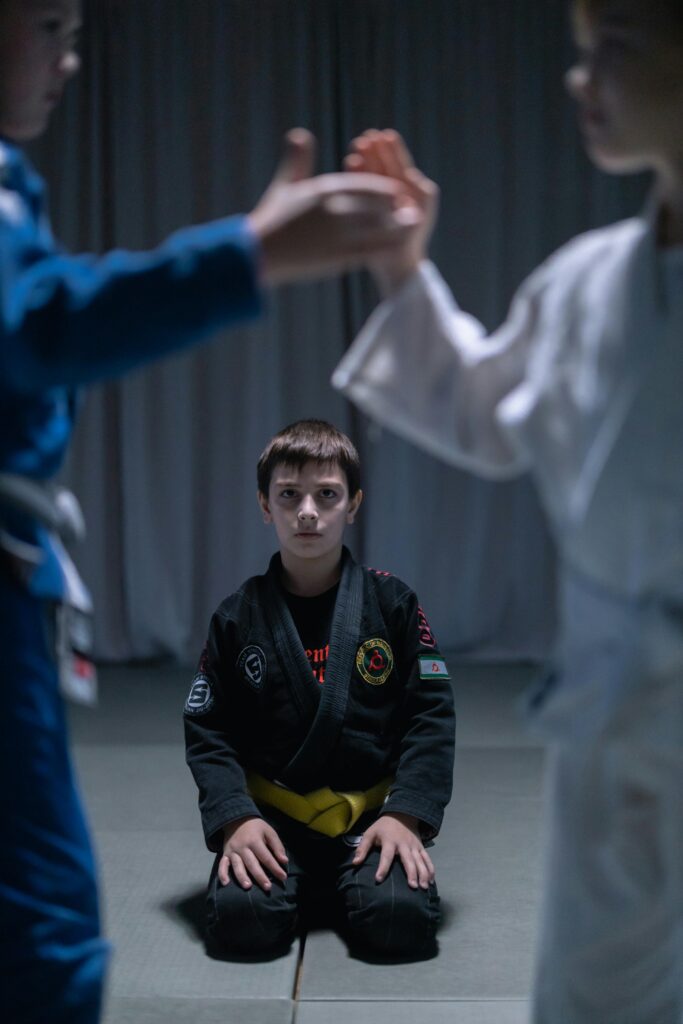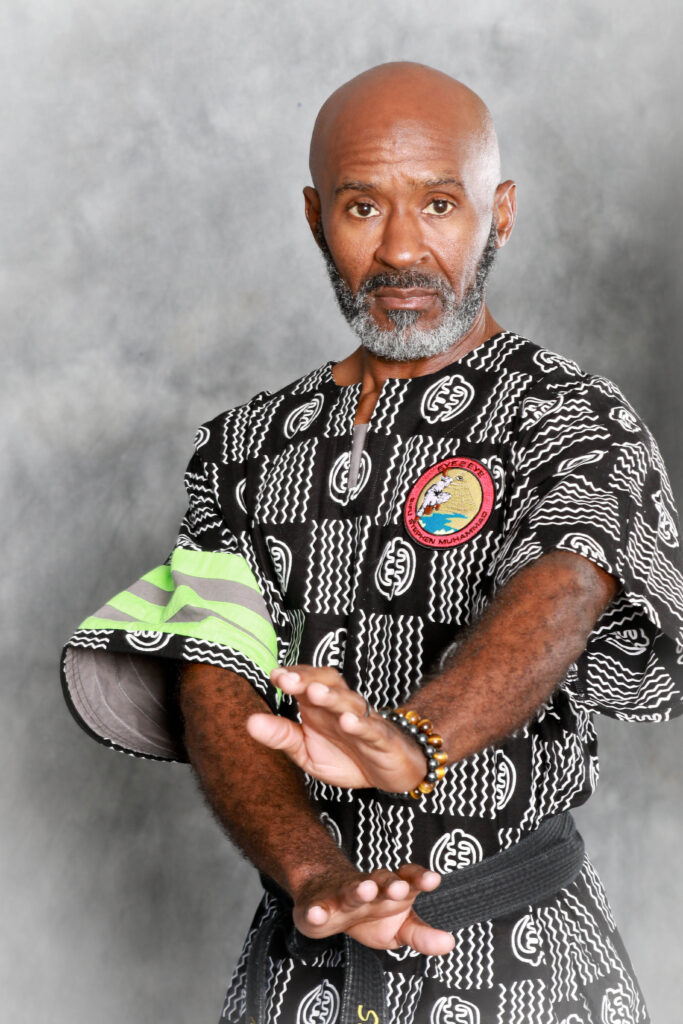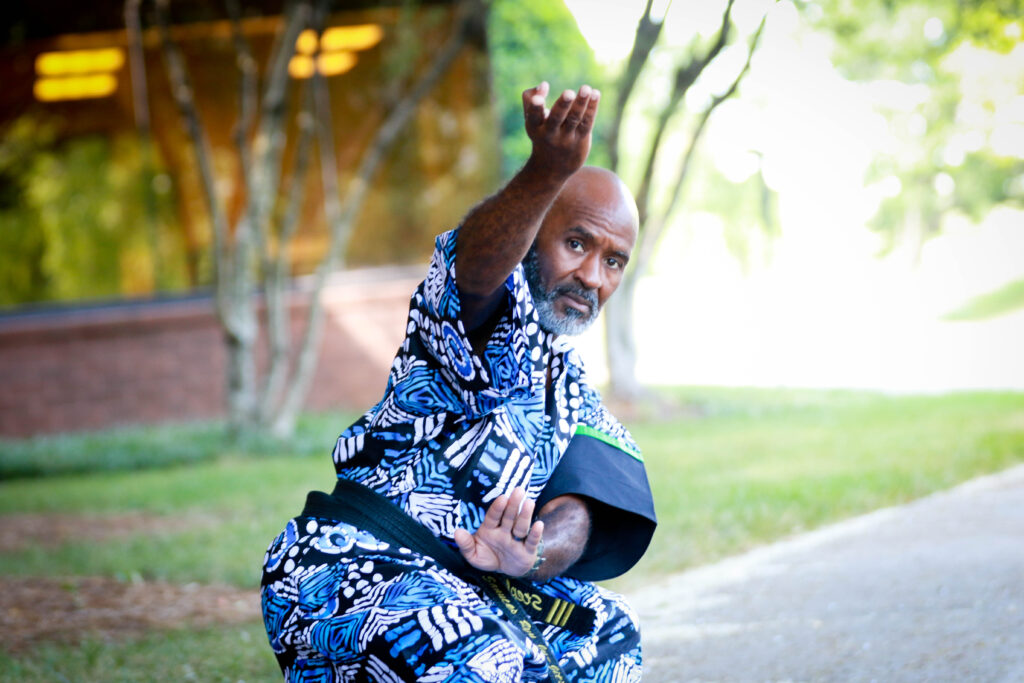Karate is a lot more than just a martial art. It’s a way to understand yourself better, sharpen your focus, and build the kind of strength that goes beyond muscle.
Here at Eye2Eye Combat, we know that stepping into the world of karate isn’t just about learning to throw a punch. It’s about gaining the confidence to face whatever life throws at you.
Whether you’re just curious or ready to tie on that first white belt, let’s explore what karate offers and how you can get started.
What Is Karate and Why It Matters in Martial Arts
Karate has deep roots in Okinawan traditions, but its reach extends across the world today. The practice focuses on precise strikes—punches, kicks, and blocks—delivered with discipline and control.
But karate isn’t just about hitting. It’s about understanding how to manage conflict, knowing when to stand your ground, and when to walk away.
In every class, you’ll hear about the balance between power and humility, about respecting your training partners and, above all, yourself.
You might think karate is all about physical strength, but it also builds mental resilience. When you know you can defend yourself, there’s a new level of calm that comes into play. That’s what makes karate a unique part of the martial arts world.
Core Techniques in Karate: Strikes, Blocks, and Kicks
Karate teaches you that every movement has a purpose. As you train, you’ll spend a lot of time mastering the basics. It might feel slow at first, but trust me—this foundation makes all the difference.
Essential Karate Stances and Their Importance
One of the first things you’ll practice is how to stand. This isn’t just about looking cool in a stance—it’s about building a solid foundation.
For example, Zenkutsu-dachi (front stance) and Kokutsu-dachi (back stance) help you maintain balance while moving through strikes.
Imagine trying to throw a powerful punch without proper footing. You’d be off balance, right? Karate stances ensure every move you make is strong and stable.
Mastering Karate Strikes: From Punches to Elbow Hits
The Choku-zuki (straight punch) is one of the most direct and powerful techniques you’ll learn. It teaches you how to deliver energy in a focused way, straight at your target.
And when the fight gets close, that’s where elbow strikes come in handy—short, powerful blows that can surprise an opponent. In training, you’ll practice these strikes again and again, building muscle memory until they become second nature.
Powerful Kicks for Defense and Offense
Kicks in karate, like the Mae Geri (front kick) or Yoko Geri (side kick), are more than just flashy moves. They are practical tools to keep an attacker at bay or deliver a decisive blow.
Kicking isn’t just about swinging your leg. It’s about balance, timing, and knowing where to strike. And yes, it’s pretty satisfying when you get that perfect snap in your kick during practice.
Why Karate is More Than Just a Workout
Karate doesn’t just train your body. It sharpens your mind, calms your spirit, and builds a community you can lean on. The benefits go far beyond the dojo.
Building Mental Toughness Through Karate
Karate teaches you to focus—on your breathing, your movements, and your opponent. When life throws a challenge your way, the discipline you learn in karate helps you stay calm and find a way through. It’s not just about the fight—it’s about managing stress and staying grounded.
Physical Benefits: Strength, Flexibility, and Endurance
You’ll be surprised at how quickly karate can change your body. It’s a full-body workout that builds strength, improves flexibility, and boosts your endurance. The more you train, the more you’ll notice those improvements.
And it’s not just about bulging muscles; it’s about feeling stronger, faster, and more agile every day.
The Sense of Community in Karate Dojos
Karate classes are a place where respect and support are part of the deal. Training alongside others builds a sense of community.
We push each other, learn from each other, and grow together. It’s more than just a class—it’s a group of people working toward a common goal.
Karate vs. Other Martial Arts: Understanding the Differences
Every martial art brings something different to the table. Karate is no exception. It’s not about which is better; it’s about finding what suits you best.
Karate and Judo: Strikes vs. Throws
Karate focuses on delivering powerful strikes—punches, kicks, and blocks that keep opponents at a distance. Judo, meanwhile, is all about grappling and throws. It teaches you how to use an opponent’s force against them to take them down.
Think of karate as mastering distance and timing, while Judo teaches you to control the close contact.
Taekwondo vs. Karate: Kick Techniques and Philosophies
Taekwondo might be known for its spectacular kicks—high, spinning, and acrobatic. Karate, however, combines kicks with hand techniques in a more grounded style.
Taekwondo focuses on speed and fluidity, while karate emphasizes power and precision. It’s a different approach to similar goals.
Karate and Brazilian Jiu-Jitsu: Stand-Up Combat vs. Groundwork
Karate keeps you on your feet, focusing on strikes and blocking techniques to control the fight before it hits the ground. Brazilian Jiu-Jitsu (BJJ) thrives on the ground, using submissions and leverage to control an opponent.
Karate teaches you to manage distance; BJJ teaches you what to do when that distance closes.
Starting Your Karate Journey: A Step-by-Step Guide
Getting started with karate doesn’t have to be complicated. Here’s how to take those first steps and make sure you’re on the right path.
Choosing the Right Dojo and Instructor
Finding a dojo where you feel comfortable is key. Look for an instructor who explains things clearly and focuses on both the physical and mental aspects of karate.
A good dojo is more than a place to learn—it’s a community that will support you throughout your journey.
Understanding Belt Progression in Karate
Karate uses a belt system to mark your progress. You’ll start with a white belt, focusing on the basics, and work your way up through yellow, green, blue, and beyond.
Each belt represents a step forward in skill and understanding. And getting that new belt? It’s a moment that makes all the hard work worth it.
Setting Realistic Goals for Your Practice
It’s easy to get caught up in wanting to progress quickly. But karate is a long game. Set small goals, like learning a new kata (form) or improving your balance. Celebrate those wins, and you’ll stay motivated through the tough days.
Practicing Karate at Home: Safe Tips and Techniques
Can’t always make it to class? You can keep your skills sharp at home with a little space and the right mindset.
Effective Warm-Up Routines for Karate Practice
Warming up is a must before any practice session. Start with some light cardio—like jumping jacks or a quick run in place—to get your blood flowing.
Follow up with stretches for your legs and shoulders. This helps prevent injuries and gets your body ready to move.
Solo Drills to Improve Your Karate Skills
Shadowboxing is a great way to practice your strikes and kicks without needing a partner.
Kata practice is another excellent solo drill—it’s like a dance of movements that sharpens your technique. Focus on your form, and imagine you’re facing an opponent with each move.
Using Online Resources for Karate Training
There are plenty of online resources, from video tutorials to virtual classes, that can supplement what you learn in the dojo. Just remember, nothing beats the feedback you get from a real instructor.
Use online content to practice between classes, but always make sure you’re keeping your form in check.
Common Mistakes Beginners Should Avoid in Karate
It’s normal to make mistakes when you start, but being aware of the common ones can help you improve faster.
- Ignoring Proper Form: Rushing through techniques might feel good, but it can lead to bad habits. Focus on doing each move correctly, even if it feels slow.
- Overexertion: It’s great to push yourself, but don’t forget to rest. Overtraining can lead to injuries. Listen to your body and take breaks when needed.
- Lack of Patience: Progress takes time. Don’t get frustrated if you don’t master a move right away. Be patient with yourself—you’ll get there.
Find Your Strength and Confidence with Eye2Eye Combat’s Karate Classes
Karate is a journey that goes beyond just learning how to defend yourself. It’s about building self-discipline, finding inner calm, and becoming a part of a community that shares your goals.
If you’re ready to experience all that karate has to offer, Eye2Eye Combat is here to help you make that leap. With passionate instructors and a focus on practical, real-world skills, you’ll find the support you need to thrive.
Explore Eye2Eye Combat and discover a place where your potential meets opportunity. Come join us and start turning your curiosity into real strength and confidence.
FAQs
What is karate martial arts?
Karate is a martial art that focuses on strikes—like punches, kicks, and blocks. It’s not just about physical strength but also about discipline, respect, and mental focus. At its core, karate teaches you how to use your body efficiently to defend yourself, all while helping you build confidence and improve your overall fitness. It’s a powerful blend of movement and mindfulness.
Are martial art and karate the same?
Karate is actually one type of martial art. Martial arts is a broad term that includes many styles, like Judo, Taekwondo, and Brazilian Jiu-Jitsu, each with its own focus. Karate, specifically, is known for its striking techniques and disciplined practice. So while all karate is martial arts, not all martial arts are karate—it’s just one piece of the bigger puzzle.
Is karate Japanese or Chinese?
Karate comes from Japan, specifically from Okinawa, which has its own rich history and cultural influences. While it draws from some ancient Chinese martial arts techniques, it evolved into its own style in Japan. So, if you’re learning karate, you’re exploring a tradition that’s deeply rooted in Japanese culture and philosophy.
What are the four types of karate?
The four main styles of karate are Shotokan, Goju-Ryu, Shito-Ryu, and Wado-Ryu. Each one has its unique emphasis. For example, Shotokan focuses on powerful, linear movements, while Goju-Ryu combines hard and soft techniques. Shito-Ryu blends multiple styles for versatility, and Wado-Ryu emphasizes body movement and balance. No matter the style, each offers a unique path to mastering karate.
Is karate hard to learn?
Karate might seem challenging at first, but like anything, it gets easier with time and practice. It’s all about learning the basics—like stances, strikes, and kicks—before building up to more advanced techniques. With patience and consistency, you’ll start to see progress, and that’s where the fun begins! Plus, our instructors make sure you feel supported every step of the way.
Is karate better than Taekwondo?
It really depends on what you’re looking for. Karate focuses more on punches, strikes, and a balance of hand and foot techniques. Taekwondo, on the other hand, emphasizes high, dynamic kicks. Both are fantastic martial arts with their own strengths. It’s not about which one is better but rather which style feels right for you and your goals. Either way, you’ll gain valuable skills and confidence.





